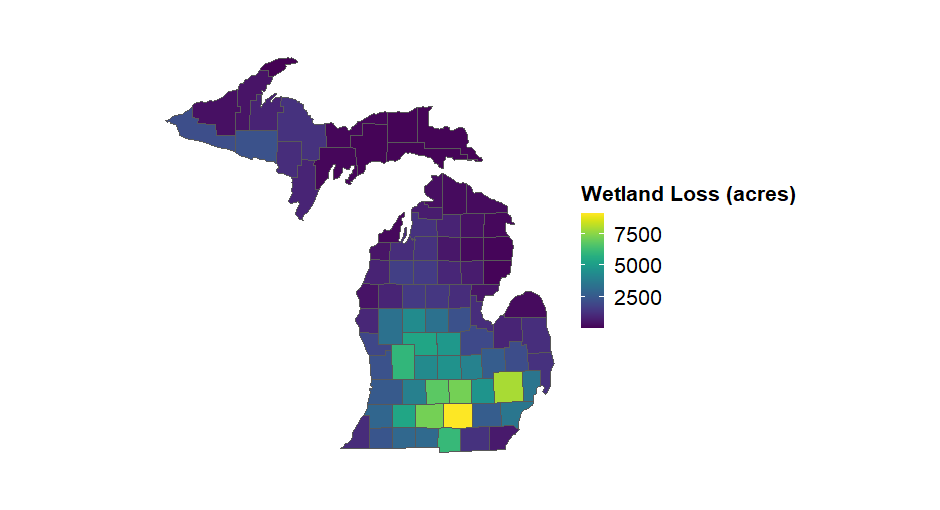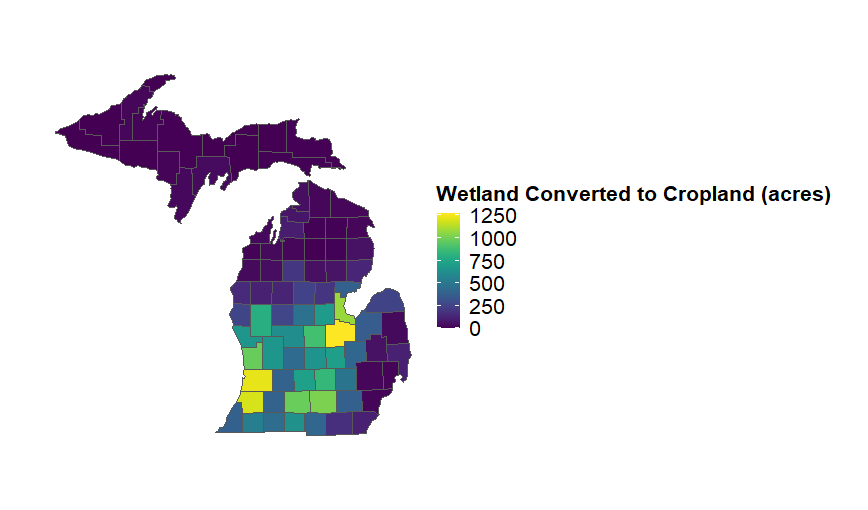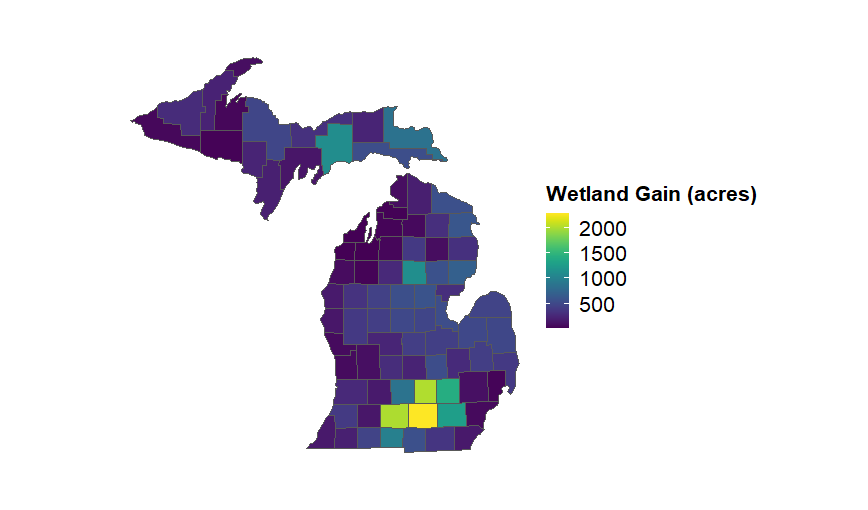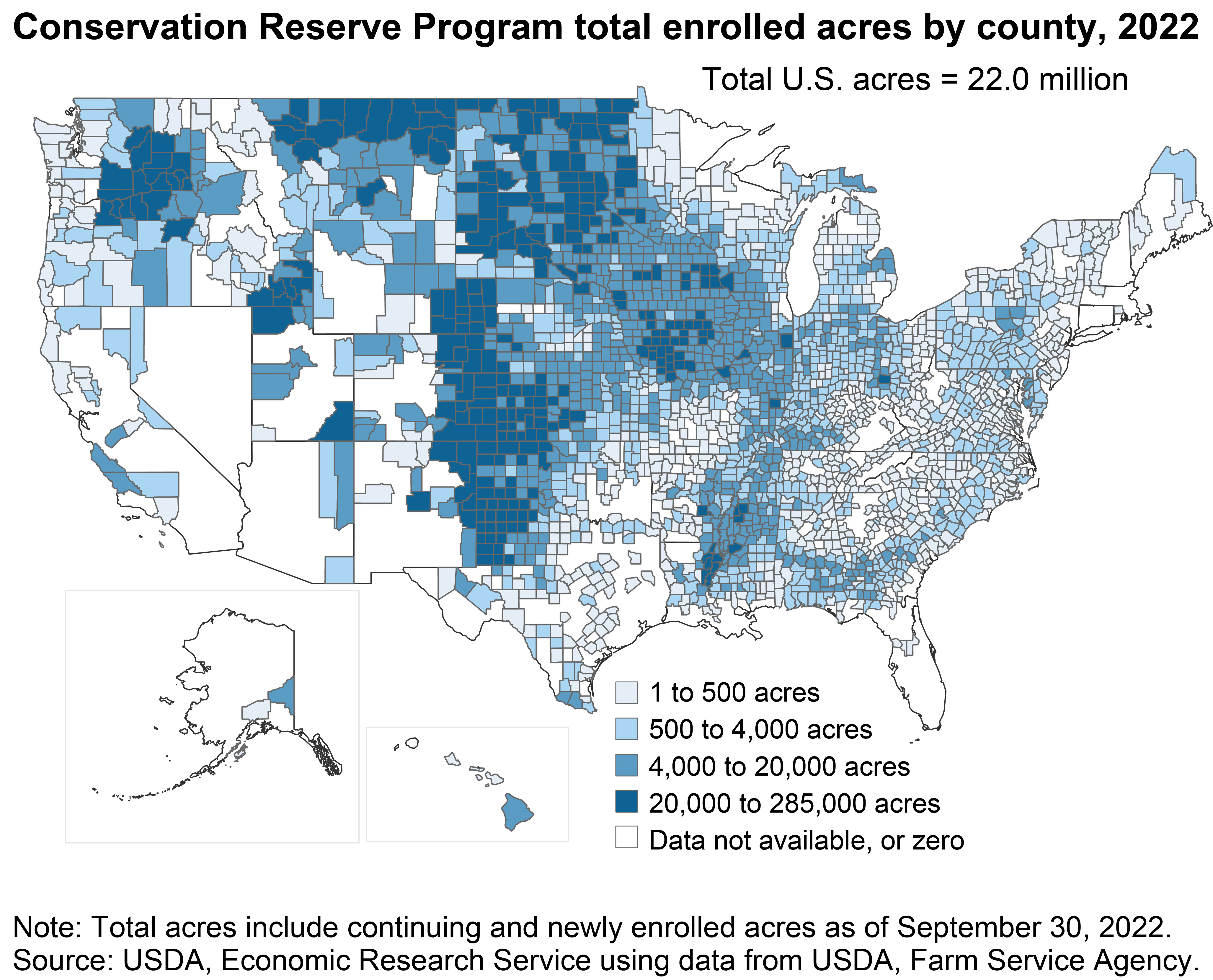Sackett vs. Environmental Protection Agency, the Clean Water Act, and the value of wetlands and property rights
A discussion of some research on the public value of wetlands and the private value of property rights.
On May 25, 2023, the Supreme Court handed down a ruling on Sackett vs. Environmental Protection Agency (EPA), a case concerning which wetlands are regulated under the Clean Water Act. The justices unanimously agreed that the EPA overreached when they attempted to regulate wetlands on the Sackett’s Idaho property, but the justices differed considerably in their assessment of what rule or test would be appropriate for determining if a specific parcel of land can be regulated by the EPA.
The Supreme Court's ruling reversed the U.S. Court of Appeals for the 9th Circuit's decision, and a 5-4 majority supported requiring a more stringent test for the application of the Clean Water Act to a wetland. The majority opinion, authored by Justice Samuel Alito, emphasized that the Clean Water Act should only apply to wetlands that are directly adjacent to neighboring waters connected to interstate commerce channels. The EPA is now tasked with rewriting the regulation to comply with the ruling.
What effects will this ruling have on Michiganders? Providing a definitive answer is impossible, but we can start by considering three related questions: First, what are the economic benefits of wetlands in Michigan? Second, what role has agriculture played in protecting Michigan wetlands? Finally, what effect do environmental regulations have on land values and agricultural profitability?
Economic benefits of wetlands
Wetlands provide an array of economic and ecological benefits. A recent paper by economists Charles Taylor and Hannah Druckenmiller estimates the value of U.S. wetlands for one specific type of benefit: flood protection. Using data from this paper, Figure 1 shows the area of converted wetland across Michigan between 2001 and 2016. Pairing this data on wetland loss with data on flood damage claims from the National Flood Insurance Program, Taylor and Druckenmiller estimate that an acre of lost wetland results in an increase of $740 in flood damages for an average U.S. wetland. For wetlands in developed areas, this figure rises to $3,240. Interestingly, the conversion of wetlands into cropland or pasture did not seem to increase flood damages much nationally, likely because farmland still has a great deal of water-holding capacity relative to paved surfaces.

However, not all wetlands and floodzones are created equal. It seems unlikely that wetland loss in Michigan would have an identical effect on flood damages as wetland loss in New Jersey or Florida. Thanks to authors making their data and code publicly available, I am able to use their empirical approach to generate estimates using only data for Michigan and Michigan’s neighbors. Table 1 shows the estimated effect of an acre of wetland loss on flood damages within the same zip code (standard errors clustered at the county level shown in parentheses) using three different samples: the full United States, Michigan and its neighbors (Wisconsin, Indiana and Ohio), and only Michigan. I present estimates for the effect of all wetland loss, in addition to estimates of the effect of converting wetlands into cropland or pasture.
Comparing Michigan to the entire U.S., I find much smaller effects of overall wetland loss in Michigan relative to the full U.S. sample– $33/acre in damages versus $201/acre. For wetland to cropland/pasture conversion, I find similar estimates of $20/acre for the Michigan-only sample and $22/acre for the Michigan and neighbor’s sample.
How large are these effects? These estimates imply that wetland to cropland conversion between 2001 and 2016 led to a $490,000 increase in annual Michigan flood damages, a small fraction of overall annual flood damages, which were $3.3 million in 2016. Framed differently, these estimates imply that current Michigan wetlands provide hundreds of millions of dollars in annual flood protection benefits.
|
Table 1. Effects of wetland loss on flood damages. |
|||
|---|---|---|---|
|
Effect of an acre of wetland loss on annual flood damages |
Full U.S. sample |
Michigan + neighbors’ sample |
Michigan only sample |
|
All wetland loss |
$201 (102) |
$18 (11) |
$33 (39) |
|
Wetlands converted to cropland/pasture |
$2 (122) |
$22 (21) |
$20 (39) |
Michigan wetlands and agriculture
In Michigan, agriculture has been responsible for wetland loss and wetland creation in recent years. The top panel of Figure 2 shows the area classified as wetland in 2001 that was classified as cropland or pasture in 2016. Southwest Michigan and the Saginaw Bay watershed have particularly high levels of wetland to cropland/pasture conversion. It’s important to note that this data does provide information on how the wetland conversion took place, only that land that was classified as a wetland in 2001 was classified as cropland/pasture in 2016.
The bottom panel of Figure 2 shows the distribution of new wetlands created between 2001 and 2016. Although this map includes all sources of new wetlands, not only agriculture, agriculture likely plays an important role in the creation of these new wetlands due to programs such as the Farmable Wetland Program and the Conservation Reserve Program.
Figure 3 shows 2022 Conservation Reserve Program enrollment. Note that Michigan’s Upper Peninsula has a relatively high level of enrollment. The Upper Peninsula is also home to an outsized share of Michigan’s wetlands.



The effect of environmental regulations and incentive programs on land values
The Clean Water Act limits the rights of landowners to engage in certain activities that may affect water quality. Section 404 of the Act requires landowners to obtain permits before dredged or fill material may be discharged into waters of the United States. Though many “normal” farming activities are exempt from Section 404, practices that convert wetlands to non-wetland uses may not be exempt. Agricultural industry groups have criticized the prior Waters of the United States rule as being insufficiently clear on what waters are or are not regulated.
Economists often use changes in the value of land as a proxy for changes in profitability or welfare. Land values are an appealing variable because, while today’s profits and yields may be good measures of current productivity, land values account for expected future revenues and costs. Surprisingly, there is somewhat limited economic research on the effect of water quality regulations on agricultural land values in the United States. Conceptually, regulations have the potential to increase or decrease land values. If regulations are successful in increasing environmental quality, landowners may benefit if improvements in environmental quality are capitalized into land values. Alternatively, if regulations are costly to comply with or prevent landowners from shifting to profitable land uses, landowners may see a decrease in the value of their land. The existence of voluntary environmental programs, such as the USDA’s Conservation Reserve Program, have been shown to increase land values, albeit only by 2-5% in the Great Lakes region.
Conclusions
The Supreme Court’s decision is likely to lead to reduced regulatory restrictions on landowners with wetland property. This has the potential to enable some conversion of current wetlands to non-wetland uses. The ultimate implications of the ruling will depend not only on the re-written EPA Waters of the United States rule, but also on the response of state policymakers and environmental agencies.



 Print
Print Email
Email




